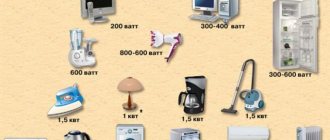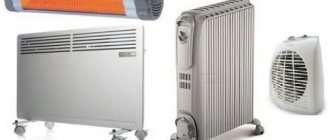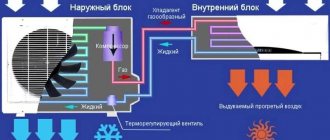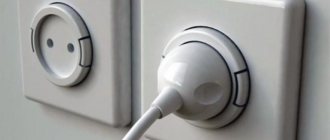Manufacturers advertise smartphones with fast charging 18 W, 20 W, 25 W, 30 W, 33 Watt, 65 W and even 120 W - what is the difference between fast charging of different powers? And does it even exist, since the numbers sometimes differ quite a bit?
There is a difference provided that the technology and protocol based on the fast charges being compared are similar.
The difference in numbers of 30W and 120W represents how high the peak power will be at the beginning of charging the battery when powered by 30W and 120W , respectively.
In practice, the power in Watt does not mean that it will be maintained only at the specified value. At the moment, all these figures represent more of a marketing characteristic than a practical benefit.
What costs does a traditional lighting system require?
A traditional household lighting system includes 220V wiring, switches, lighting fixtures, and lamps. If the power of all lighting devices exceeds 3.5 kW, the system is divided into subsystems that are connected to a separate residual current device (relevant for large country houses).
When using incandescent lamps, the consumer can choose lighting fixtures at his own discretion. The final cost of the system depends on their price. Lamps are sold at different prices, depending on the design and manufacturer. The price of incandescent lamps also varies. For products from Russian manufacturers, the average value is 15 rubles.
Other manufacturers have different prices:
- Philips 60W – 30 rub., 40W – 35 rub., color 10W – 38;
- “candle” Foton 25W – 29 rubles;
- “pear” Osram 75W – 31 rubles, 40W – 32.
The final cost will depend not only on the area of the home and the power of the lighting fixtures, but also on the preferences and financial capabilities of the family. When purchasing expensive lamps and switches, dimmers, and imported light bulbs, the initial costs will increase not only during purchase, but also during the installation process. To include dimmers in the circuit, you will have to invite a specialist who knows exactly how to do this work.
Attention! Power consumption can be affected by illuminated switches and dimmers. The former consume a small amount of watts, the latter allow, if necessary, to reduce the intensity of the glow while simultaneously reducing the power.
How many watts does an LED light bulb consume?
LED lamps are considered the most economical, as they theoretically consume 7.5 times less energy than products with incandescent filament.
For example, an LED lamp that consumes 10 W is equivalent in lighting level to a 60 W “Ilyich light bulb”. If the duration of use is the same, you can pay 6 times less for electricity.
Table of electricity consumption of LED lamps of different power
| Electricity consumption (W) | Light Flux (lm) | ||
| Incandescent | Luminescent | LED | |
| 20 | 5 | 3 | 250 |
| 40 | 8 | 4 | 400 |
| 60 | 15 | 10 | 700 |
| 75 | 19 | 11 | 950 |
| 100 | 26 | 14 | 1300 |
| 150 | 36 | 20 | 1800 |
| 12 | 50 | 90 | Luminous output (lm/W) |
Comparison of LED light bulb and incandescent light bulb
The advent of electric lighting in the form of an incandescent light bulb brought new perspectives to humanity, radically changed the way of life and made it possible to engage in vigorous activity at any time of the day.
But the world does not stand still and today there are many more modern light sources on the market, including fluorescent, halogen, gas discharge, and LED. The latter, despite their recent appearance, are actively gaining popularity and are gaining an increasing share of the market, displacing analogues from it. This happens because to illuminate the same area of a room, LEDs require significantly less power than incandescent light bulbs. The table shows the difference more clearly.
Light bulb power correspondence table
| Power, W | Luminous flux in Lumens | ||
| Incandescent | Luminescent | LED | |
| 20 | 5-7 | 2-3 | 200 |
| 40 | 10-13 | 4-5 | 400 |
| 60 | 15-16 | 8-10 | 700 |
| 75 | 18-20 | 10-12 | 900 |
| 100 | 25-30 | 12-15 | 1200 |
| 150 | 40-50 | 18-20 | 1800 |
| 200 | 60-80 | 25-30 | 2500 |
As can be seen from the table, for illuminating the same space, the power of LED light sources with the same luminous flux value is significantly lower than that of their analogues. This is explained by the fact that LED production uses the most efficient and least resource-intensive processes. If you delve a little deeper into the essence of the work process, you will notice that the power of ice bulbs works more on producing light fluxes and minimally on producing heat. At the same time, in incandescent lamps up to 90% of the electricity is spent on heat generation and only 10% directly on lighting.
Comparison by technical characteristics
How to choose LED power for a room? If a person understands a little about the technical side of the issue, then she can calculate the footage of the room and select a product based on the luminous efficiency of the light source, which is measured by the number of lumens per watt. This also includes calculating the amount of lighting per room area. This is often done by professionals, especially when it comes to specialized lighting for commercial organizations or public events.
Comparison of technical characteristics
In addition to the power itself, there are other important parameters. The efficiency table below demonstrates the important components of lighting fixtures:
Technical characteristics comparison table
| Specifications | LED | Incandescent | Advantages of LED |
| Life time | 50 thousand hours | 1 thousand hours | 50 times better |
| Light efficiency | 80-100 Lm/W | 10 Lm/W | 8-10 times better |
| Heat generated during operation | low | high | better |
| Vibration resistance | low | high | better |
| Resistance to voltage surges | low | high | better |
| Sensitivity to frequent on/off | No | Yes | better |
| Flower temperature, K | 2000-6500 | 2700 | wider range |
| Color rendering index, Ra | 80 | 100 | 20% worse |
| Permissible ambient temperature | -40℃ +40℃ | -60 ℃ +100℃ | range is smaller |
| Radiation pulsation | No | faintly noticeable | almost the same |
| Special disposal | not required | not required | the same |
| Efficiency | 70-100 % | 50-80% | 20% better |
Consumption calculations
To calculate how much electricity any light source consumes, several steps are required:
- look at the power indicated as W on the product or packaging;
- divide the number by 1000 (to get the value in kilowatts);
- determine how many hours a day the family uses the lamp;
- multiply the number by 30.
Next, the power (item 2) is multiplied by hours (item 4).
To find out how much one lamp consumes in rubles, the final calculation result is multiplied by the tariff.
LED light bulbs
For example, you can take a two-room apartment, in which there are 3 lamps of 100 W each (in living quarters and in the kitchen) and 3 lamps of 60 W each (in the bathroom, toilet and hallway).
- in the living room 4 hours in the evening and 1 in the morning;
- in the bedroom 2 hours in the evening and 2 in the morning;
- in the kitchen 3 hours in the evening and 1 in the morning;
- in the hallway and toilet for an hour a day;
- in the bathroom 2 hours in the evening and 1 in the morning.
When replacing with LED sources, 3 products of 14 W and 3 of 10 W are used.
Per day, such a system consumes:
12*14+4*10=208 W=0.208 kW
With an average tariff of 4 rubles. for 1 kW per month we will pay 24.96 rubles.
Energy saving light bulbs
If filament sources are replaced with energy-saving ones, then you need to buy 3 products for 20 W and 3 for 12 W.
All devices consume per day:
You need to pay 44.64 rubles per month.
Incandescent light bulbs
An incandescent lamp converts only 10-20% of electricity into light, the rest is spent on heat.
For the same apartment, when using sources with incandescent filament, they consume per day:
12*100+4*60=640 W=0.64 kW
You need to pay 76.80 rubles per month.
What's the difference between 65W and 120W fast chargers?
The difference between fast charging using the same technology Quick Charge 5 with a power of 65 W (Qualcomm reference smartphone) and 120 W (Xiaomi Mi 10 Ultra) was shown during testing on Android Authority (source). A translation of this material with our comments can be found here.
Fast charging speed in terms of “mAh per minute”:
- • 120 W (QC5 fast charging in Xiaomi Mi 10 Ultra) charges an average of 214 mAh/minute ;
- • 65 W (QC5 in the Qualcomm reference smartphone) - 95 mAh/minute ;
- • 35 W (in the same comparison, charging speed using the USB Power Delivery PPS protocol) - 78 mAh/minute .
Please understand that these are approximate values provided by Android Authority for general comparative purposes.
What savings can be achieved
Most often, incandescent light bulbs are still used in everyday life. The market offers products from various manufacturers at different prices, with a large selection of power, bulbs and caps. These light sources can be selected for any lamp. Most Russians do not calculate energy consumption and costs, although they know that compact fluorescent and LED lamps are more efficient.
From the table above it can be seen that an energy-saving light bulb consumes 4 times less energy than a model with an incandescent filament, an LED light bulb consumes 7 times, and it is 1.5-1.8 times more economical than a fluorescent one. When light output is taken into account, the benefits are even more obvious.
Important! When choosing, you need to consider the disadvantages.
Disadvantages of energy-saving sources:
- mercury content in the structure;
- slow combustion (especially at low temperatures);
- There are products with light that is unpleasant for the eyes;
- there is no ability to adjust the brightness (dimmable products are rare);
- quickly degrade, service life does not exceed 8 thousand hours.
Disadvantages of products with LEDs:
- high cost (from 300 rubles);
- do not work correctly with the dimmer or do not support dimming;
- the switch needs to be replaced if it is backlit;
- There is a large volume of low-quality products on the market.
Do not forget that the connection diagrams for energy-saving and LED lamps include starters and drivers, and various connecting elements. When using low-voltage power supplies, you have to create wiring for 12 or 24 V. The total power rating is limited to 300 watts. This is how much 9 light sources of 30 W consume.
Most Russian consumers are stopped from buying LED lamps by their price; no one thinks about the other nuances. In practice, when creating a new system or completely replacing an old one, a relatively large initial investment is required. But the costs quickly pay off if all the elements of the circuits are of high quality.
Reasons for the rapid payback of LED products:
- little electricity is consumed;
- resistance to mechanical damage and vibration;
- minimal reaction to frequent switching on/off;
- long service life.
Main conclusions
The newest LEDs have become a worthy replacement for filament sources. When purchasing quality products, there is no difference in lighting. If you think about the long term, using a traditional lighting system is not practical. Incandescent light bulbs create significant waste due to low efficiency and the need for frequent replacement.
Another important factor is the reluctance of ordinary consumers to do something new. Those who dared to upgrade their lighting system appreciated the convenience of LED products. The amounts on bills have become smaller, and there is no longer a need to turn the lights on and off several times during the evening or morning in order to save money. There is an opportunity to do what is convenient.
How many kilowatts per hour does a light bulb consume?
All lighting systems run on electrical energy, the production of which also requires various resources. Therefore, for many consumers, payment for light is a fairly large expense item. In this regard, the question very often arises, how many kilowatts per hour does a light bulb consume and is it possible to somehow reduce these costs? Currently, this problem can be solved quite easily, since many new types of lamps have appeared, the technical characteristics of which can significantly reduce electricity costs.
Comparative characteristics of various lamps
It is recommended to take the most popular light sources as an example. Currently, conventional incandescent lamps are still widely used in all spheres of life and activity. Bulbs with a power of 40, 60, 75 W are mainly used, as they are the most economical. Lamps of 100, 150 and 200 W are used much less frequently.
For subsequent comparison, you need to perform a simple calculation, which involves 5 light bulbs of 60 watts each, turned on for 4 hours every day. First, it is determined how much a 60 watt light bulb consumes per hour . As a result of the calculations, the monthly electricity consumption will be: (5 x 60 x 4) x 30 = 36,000 watts or 36 kW. If the cost of one kilowatt is conventionally taken as 3.5 rubles, then the total price of electricity consumed by five light bulbs will be: 36.0 x 3.5 = 126 rubles. That is, for 5 light bulbs over the course of a month, a fairly significant amount accrues. It can be even more if in large apartments or private houses more than 5 lighting devices are used. In addition, the light bulbs themselves can be more powerful.
In order to reduce lighting costs, you need to analyze the operation of lighting fixtures, determine the number of lamps that are turned on unnecessarily, as well as how much electricity the light bulb consumes per hour. If there are no people in the room, the lights should be turned off. It is recommended to use lower wattage bulbs or reduce their number altogether.
With the same luminous flux, energy-saving lamps consume 5 or more times less electricity than conventional incandescent lamps. For example, with a luminous flux equivalent to 60 W, the actual power consumption of energy-saving lamps will be only 12 W. If, for example, we also take 5 light sources operating 4 hours a day, then the calculation results will be completely different: (5 x 12 x 4) x 30 = 7200 watts, which is 7.2 kW. The resulting value is multiplied by the tariff - 7.2 x 3.5 = 25.2 rubles. Thus, the difference in cost will undoubtedly be in favor of energy-saving lamps.
LED lamps are considered the most efficient and modern light sources. When consuming only a few watts, the amount of light output is 10 or more times higher than that of other types of light bulbs. That is, a 5 W LED lamp can be compared with an incandescent lamp of 50 W or higher. However, currently the main disadvantage of such lamps is their high cost, making them inaccessible to the general public. In this regard, the payback period may take several years.
Correspondence between the power of LED lamps and incandescent lamps
If you want to obtain a luminous flux (brightness) of a certain value and compare LED lamps and incandescent lamps, then the former have lower power. Accordingly, when using LED lighting, the amount of electricity consumed increases.
| LED lamp, power in W | 2-3 | 4-5 | 8-10 | 10-12 | 12-15 | 18-20 | 25-30 |
| Incandescent lamp, power in W | 20 | 40 | 60 | 75 | 100 | 150 | 200 |
| Luminous flux, Lm | 250 | 400 | 700 | 900 | 1200 | 1800 | 2500 |
This table will help you choose LED lamps to effectively replace old lighting.
In terms of luminous flux, a 60W incandescent lamp corresponds to a 9W LED lamp. In addition to lower power consumption with the same light output, the LED lamp has other advantages. The energy efficiency of LED lamps is 7.5 times greater. This is when illuminated by an LED light source and incandescent lamps of the same power.
The effectiveness of replacing incandescent lamps with LED lamps is obvious. You get bright white light and save on electricity by matching the wattage and purchasing new bulbs.
Comparison table of 40W incandescent lamp, 15W fluorescent lamp and 5W LED lamp
| Characteristics | LED lamp | Fluorescent Lamp | Incandescent lamp |
| Power consumption | 5 W | 15W | 40 W |
| Light output efficiency | 90 Lm/W |
| 10.5 Lm/W |
| Light flow | 450 Lm | 450 | 420 Lm |
| Working temperature | 70°C | 60°C | 180°C |
| Life time | Up to 50,000 hours | Up to 25,000 hours | Up to 1,000 hours |
| Environmental friendliness | Yes | Contains mercury | Yes |
| The need for recycling | Does not require special disposal measures | Requires special disposal measures | Does not require special disposal measures |
| Use in damp and dusty areas | Maybe | undesirable, service life is reduced | Maybe |
| On delay | No | Yes | No |
| Frequent power on and off | does not affect service life | shortens service life | shortens service life |
| Flicker | No | Maybe | No |
| Heating of the lamp surface | 30 degrees | 60 degrees | 120 degrees |
| Vibration resistance | Yes | No | No |
| Maintenance | rarely | moderately | Often |
Comparison table of 60W incandescent lamps, 20W fluorescent lamps and 9W LED lamps
| Characteristics | LED lamp | Fluorescent Lamp | Incandescent lamp |
| Power consumption | 9W | 20W | 60 W |
| Light output efficiency | 78 Lm/W |
| 12 Lm/W |
| Light flow | 700 Lm |
| 720 Lm |
| Working temperature | 70°C | 60°C | 180°C |
| Life time | Up to 50,000 hours | Up to 25,000 hours | Up to 1,000 hours |
| Environmental friendliness | Yes | Contains mercury | Yes |
| The need for recycling | Does not require special disposal measures | Requires special disposal measures | Does not require special disposal measures |
| Use in damp and dusty areas | Maybe | undesirable, service life is reduced | Maybe |
| On delay | No | Yes | No |
| Frequent power on and off | does not affect service life | shortens service life | shortens service life |
| Flicker | No | Maybe | No |
| Heating of the lamp surface | 30 degrees | 60 degrees | 120 degrees |
| Vibration resistance | Yes | No | No |
| Maintenance | rarely | moderately | Often |
Comparative table of 100W incandescent lamp, 25W fluorescent lamp and 12W LED lamp.
| Characteristics | LED lamp | Fluorescent Lamp | Incandescent lamp |
| Power consumption | 12 W | 25W | 100 W |
| Light output efficiency | 75 Lm/W |
| 13.6 Lm/W |
| Light flow | 900 Lm |
| |
| Working temperature | 70°C | 60°C | 180°C |
| Life time | Up to 50,000 hours | Up to 25,000 hours | Up to 1,000 hours |
| Environmental friendliness | Yes | Contains mercury | Yes |
| The need for recycling | Does not require special disposal measures | Requires special disposal measures | Does not require special disposal measures |
| Use in damp and dusty areas | Maybe | undesirable, service life is reduced | Maybe |
| On delay | No | Yes | No |
| Frequent power on and off | does not affect service life | shortens service life | shortens service life |
| Flicker | No | Maybe | No |
| Heating of the lamp surface | 30 degrees | 60 degrees | 120 degrees |
| Vibration resistance | Yes | No | No |
| Maintenance | rarely | moderately | Often |
Calculation of power consumption
The power value is usually indicated on the light bulb itself in the form of a digital symbol along with the Latin letter W. In some cases, the information is indicated on the packaging. Power is measured in watts. This unit of measurement cannot be used to compare brightness, but is intended to determine power consumption.
The number of kilowatts is determined by dividing the watts by 1000, by moving the decimal point to the left by three places. Thus, if a regular incandescent lamp consumes 40 W, then when converted to kilowatts the result is 40/1000 = 0.04 kW. In the same way, how much a 100 watt light bulb consumes per hour is determined. In order to calculate the power consumption of a standard fluorescent lamp, you need to perform the same steps: 15 W/1000 = 0.015 kW. The resulting value will be 3.5 times lower than that of an incandescent lamp.
The next step is to calculate how many hours are spent on operating the lamp during the month. If a 0.04 kW incandescent light bulb is turned on for 5 hours every day, then over 30 days of the month the total will be 150 hours. The resulting value must be multiplied by the number of kilowatts consumed, that is, 0.04 x 150 = 6.0 kW/h per month. The question of how to calculate how many kilowatts per hour is consumed by a 50-watt light bulb and other lamps with different powers is solved in the same way.
Knowing the amount of power consumed, it will not be difficult to calculate the cost of electricity. It is necessary to multiply all the power consumed per month by the cost of one kilowatt. For incandescent lamps, which were discussed above, this will be: 6.0 kW/h x 3.5 rubles = 21 rubles. Significant savings can be achieved by using energy-saving light sources instead of traditional lamps.
For example, when using compact fluorescent lamps, payback occurs within 9 months. Their service life is much longer, which creates additional savings. LED lamps are even more efficient, capable of operating continuously for 50,000 hours. Each such lamp allows you to save approximately 450 rubles per year.
Before using lamps with increased power, it is necessary to check the labeling of the lamp indicating the maximum permissible power. It is prohibited to use light sources that consume power above the permissible value. This may cause a short circuit and other negative consequences.
Fast charging 120 W - not always faster than 30-50 W
If 120 Watt fast charging is poorly implemented in the charger and smartphone, then they will constantly heat up. To regulate the temperature, the average charging power will be reduced significantly.
The principle of reducing and increasing power:
- • temperature increases - voltage and current decrease;
- • voltage and current decrease - temperature drops ;
- • temperature is normal - voltage and current increase.
There are temperature range standards when charging smartphones.
Find out what his boundaries are. A high-quality implementation of fast charging with a specified power of 30 W may even be formally “faster” than 120 W. After all, its average power values will presumably be higher.
How many mAh can you charge in 30 minutes on QC5 fast chargers with different powers?
How does a 30 W LED spotlight shine - light brightness, illuminated area and suspension distance
It’s not worth talking about the fact that LED lamps have quickly begun to be introduced into our daily lives. This is a given, which depends on a large number of advantages of these light sources. In this article, we will be interested in another, more specific, question - how does a 30 W LED spotlight shine? Let's figure it out.
Firstly, let's start with the fact that the question itself in a purely physical concept (according to physical laws) is meaningless. After all, we know that the light flux itself spreads uniformly and infinitely. Therefore, most likely, the question needs to be rephrased - how far from a 30 W LED spotlight will it be light? Although it will be necessary to define the concept of “light”. To do this, you will have to introduce into the topic such a term as illumination, which is measured in lux. So, there are special recommended standards that are used for lighting rooms of various purposes. Eg:
- in the gym, the illumination should be 200 lux;
- in the reading room 200-300 lux.
Lighting calculation
It is believed that night illumination of 10 lux is the best option. This is almost 35 times more powerful than the light of the moon. LED spotlights provide 100 lumens of lamp brightness per watt of power. And since our LED spotlight has a power of 30 watts, its brightness will be 3000 lumens.
To find the area of comfortable lighting, you need to divide the actual brightness of the lamp by the standard one, that is, 3000/10 = 300 m². This is exactly the area that a 30-watt LED spotlight will illuminate normally. It will be comfortable to be and navigate in this territory.
But there is one nuance that concerns the design of the lighting fixture. The thing is that the opening of the light beam will depend on the design of the diffuser lens. This can be an angle of 60º or 120º. Most often, lamps of this type and this power have a dispersion angle of 120º, from here we will consider the luminous flux. We are interested in what distance from the light source the luminous flux forms an area equal to 300 m² with an illumination of 10 lux.
To do this you will have to use this formula:
R=5.65√W/L. Here W is the power of the lighting fixture, and L is the standard illuminance. That is, the final formula: R = 5.65 x √30/10 = 9.8 m. Round up to 10 m.
Please note that this calculation applies to those LED floodlights that are installed on the ceiling or suspended on horizontal street structures. Installation at an angle (on the wall) reduces the brightness of the light, because part of it is spent on illuminating the walls themselves.
If a 30W LED floodlight with a beam of directed light flux at an angle of 60º is used to illuminate the street, then instead of the coefficient 5.65, another indicator is put into the formula - 10.67. By the way, the lighting area with lamps of this type is calculated using the standard formula:
When the illuminated area from a spotlight with a directed beam angle of 60º is calculated, a coefficient of 0.25 must be added to the formula. The formula will look like this:
S=0.25 πR². That is, the radius of the beam displayed on the ground will be half as large.
What do we get as a result? So, a 30-watt LED lighting fixture must be suspended above the ground at a height of 10 meters. And in this way it will illuminate an area of 300 m². Essentially, this is a 15x20 m area, and there will be light on it in order to move freely or just be.
Converting kW to W and vice versa
Similar to other units of measurement, the prefix “kilo” means 1000. To convert a watt to a kilowatt, you need to use the formula:
If the mixer says 1.6 kW, this means that its power in watts will be 1600. If you convert it back, then the number of watts is divided by 1000. An incandescent lamp has a power of 100 W, which is the same as 0.1 kW.
Example of conversion of 2 kilowatts (2 kW): 2*1000=2000 W.
It is easy to find out the power of the device - you will need to study the technical documentation for the device or look at the markings located on the case.
Now you can easily calculate and convert units. There are various online calculators for this. They enter a query into the search bar and go to the site.
How much electricity does a light bulb consume?
Good day, dear friends! Today we’ll talk about saving electricity again, in previous articles we calculated how much electricity household appliances (vacuum cleaner, microwave) consume, and today we’ll try to calculate how much electricity light bulbs consume in your home, and whether it’s possible to somehow save on electricity consumption by light bulbs.
So, let’s first figure out what kind of light bulbs we have in our apartment; the following types are most often used in everyday life:
- Incandescent
- Luminescent (energy saving)
- LED
Incandescent lamps
Let's calculate how much electricity is consumed by ordinary light bulbs of different wattages, the most popular ones in everyday life.
Power consumption: Power 60W - energy consumption will be 60 W or 0.06 kilowatts in 1 hour Power 95W - consumes electricity 95 W 0.095 kilowatts in 1 hour Power 100W - will consume 100 or 0.1 kilowatts of electricity in 1 hour.
Let's calculate how much we will pay for the use of light if, for example, we have 3 acres (hall, kitchen, bedroom) and 3 for 60 W (hallway, toilet, bathroom).
How much electricity do we spend?
Let's take for example 3 at 100W burn for 5 hours in the evening and 1 hour in the morning, resulting in 6 hours a day, we get 3 pieces per hour winding 300 W in 6 hours 1800W or 1.8 kW. 3 more at 60W, let’s assume that each burns for 1 hour a day, in total we get 3 * 60 W = 180 W or 0.18 kW. Total per day is about 2 kilowatts.
When using incandescent lamps, electricity consumption will be as follows: Total for 1 day will be equal to 1.8 kW + 0.18 kW
2 kW Total 2 kW will be wound in 1 month * 30 days = 60 kW
How much will you have to pay?
Let's take the cost for 1 kilowatt = 4 rubles. Then for 1 hour of a 60W lamp we will pay 0.06 * 4 r = 24 kopecks. for 1 hour lamp 95 or 100 W = 0.1 * 4 r = 40 kopecks.
When using 6 light bulbs 3 - 100W 6h/day and 3-60W 1h 180 watts/day we calculate: Expenses for 1 day we get 2 kW * 4 r = 8 rubles per day for 1 month 60 kW * 4 r = 240 rub. in 1 month
We present a table corresponding to the power consumption of light bulbs with the same luminous flux. That is, each column of the table represents the same glow power. The first line is the power of an energy-saving lamp, the second line is the power of an incandescent lamp with the corresponding luminous flux.
From the 1st column we see that a 6-watt energy-saving lamp shines the same way as a 30-watt incandescent lamp.
The following 2-line plate shows the ratio of LED to incandescent bulbs.
Converting watt to kilowatt
By analogy with other units of measurement, the prefix “kilo” means 1000, so the formula for converting watts to kilowatts is as follows:
1 kW = 1000 W
If the indicated parameters of the iron are 1.8 kW, then in the corresponding translation this figure is 1800 W.
We recommend: What are VDGO and VKGO in the housing and communal services receipt
When converting back, the number of watts is divided by 1000: with an incandescent lamp power of 100 W, this criterion equals 0.1 kW.
The value of this equipment characteristic is easy to find out by studying the technical documentation of the product or the markings applied by the manufacturer on the case.
Fluorescent lamps (energy saving)
Then, in order for the house to remain as bright as with conventional light bulbs, you need to install the corresponding light bulbs, that is, instead of 60 watts, we put an energy-saving 12W, instead of a hundred we put an energy-saving 20W, this way we will reduce energy consumption and pay 5 times less.
How much electricity do we spend?
So let's calculate how much electricity our fluorescent lamps will consume, for this we take the same example of 6 light bulbs, 3 as hundreds, i.e. 20 W and 3 as 60, i.e. 12 watts. We get: 3 light bulbs, each for 6 hours a day, each light bulb consumes 20 W per hour, then we get 360 W. + 3 light bulbs for an hour a day at 12 watt/hour = 36W. Total for 1 day: 360 W + 36 W = 396 W = 0.4 kilowatts Total for 1 month: 0.4 * 30 = 12 kilowatts
How much will you have to pay?
The total for the month, the amount to be paid for purely lighting will be as follows: Total in rubles for 1 month: 12 kW * 4 r = 48 rubles.
The benefit is obvious: energy consumption is reduced by 5 times. Is it possible to save even more on electricity consumption by lighting devices?
Let's move on to an even more interesting and economical lighting device.
Difference between kW and kWh
Many users refer to electricity consumption readings as kilowatts, but this is incorrect.
Important! Electricity consumption in kWh is calculated as the amount of power spent over a certain time interval.
It is worth considering an example:
For lighting, an incandescent lamp with a power of 0.07 kW is used. For 6 hours of electricity operation (this is the approximate time during which the lights are on per day), the device consumes energy 0.07 * 6 = 0.42 kWh.
For a month, the cost of an incandescent lamp will be 0.42 * 30 = 12.6 kWh.
Using the same method, the total consumption of electricity for a month is calculated, knowing the duration of the device or appliance being turned on and its power. Subsequently, it is possible to establish the amount of savings achieved due to the operation of less energy-consuming equipment and a more careful attitude to resource consumption.
In the SI system of units there is no such quantity as kilowatt-hour. This is an off-system derivative, which was invented solely to record the electrical energy used or produced.
Important! In Russia, the concept of “kilowatt-hour” is used as a unit of measurement based on GOST 8.417-2002. It indicates the exact name, decoding and scope of application.
When choosing equipment in a store, you should pay attention to the body. The front panel always shows the letter W and numbers next to it. This is the power of the device, measured in Watts. In other words, the rate at which electricity is consumed. A kilowatt is 1 W multiplied by 1000. The kilowatt-hour indicator is used to measure energy in everyday life. This is the electricity that the device produces or consumes in 1 hour.
LED
Lamps of this type are even more economical and consume electricity not 5 times less than conventional light bulbs, but 7 times. That is, if we want to replace 75 watts, then an LED one will be suitable for 10 watts, while the glow will remain the same.
Having expenses for 1 month when using ordinary llamas, we get 240 rubles / 7 = 34 rubles per month, we will pay for lighting fixtures. And per year instead of 2880 we will pay 408 rubles.
So what should you choose in the end?
The 30W adapter has more fast charging standards, which can be useful if you use devices other than Apple.
If you decide to buy fast charging for your iPhone, choose a 29 W adapter for 1,699 rubles and be happy. I would especially recommend it to owners of iPhone 11 and older models whose smartphones come with an outdated 5-watt adapter.
As for charging speed, all adapters with a power of 18 W or more charge the device at the same speed, even a 61-watt power supply:
Macworld conducted a study comparing the speed of different types of chargers
If you are looking for an adapter not for home use, but specifically for traveling, or just want to carry it with you in your backpack, and the cost does not matter, choose the 18 W adapter, which is included with the iPhone 11 Pro and iPad Pro ( 2018 and newer): it is compact, and the charging speed is the same as the 29-W adapter.
What is more profitable?
When determining the most economical option, consider the operating time of each type of llama and their cost. We immediately discard the usual ones because they burn out more often and consume more.
But energy-saving and LED ones need to be sorted out. Energy saving - price about 250 rubles, service life 10,000 hours (4.6 years) LED - price about 350 rubles, service life 30,000 hours (14 years with 6 hour use)
For 14 years we will pay for energy-saving ones - 576 * 14 = 8064 rubles + replace light bulbs 3 times. For 14 years for LED ones - 408 * 14 = 5712 rubles.
When calculating, we took average figures, but someone has large production areas with lighting in which only replacing light bulbs will help save decent amounts of money in their wallet.











